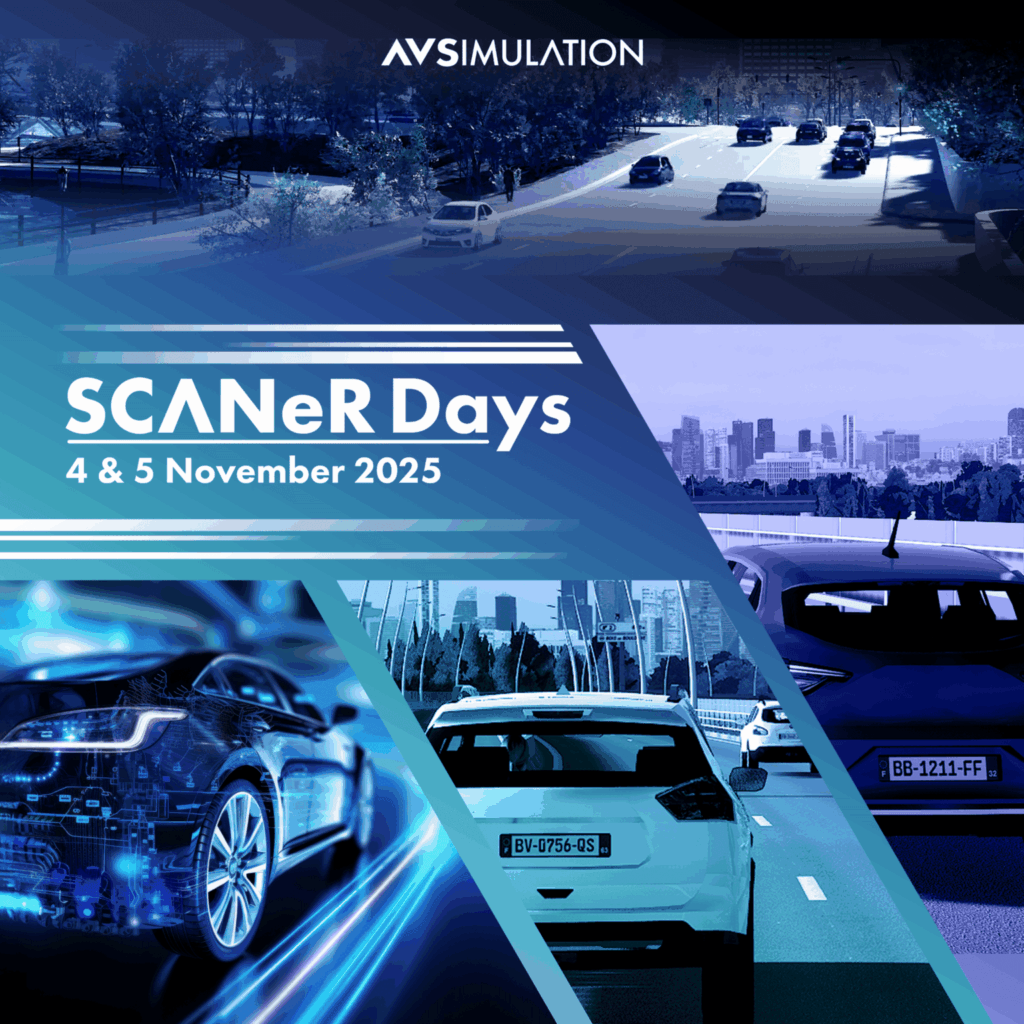In the world of intelligent vehicles, headlights are no longer just basic lighting systems. They’ve become adaptive, dynamic functions, capable of adjusting their shape, intensity, and range in real time based on traffic, weather, and road geometry. We now refer to these as Intelligent Headlights.
But embedded intelligence alone is not enough. To be deployed in Europe, these systems must comply with strict regulatory standards, particularly regarding safety, glare prevention, and alignment with road rules. This is where simulation becomes essential. Using platforms like SCANeR™, manufacturers can validate these complex lighting functions early in the development process, in a controlled, realistic virtual environment.
Lighting is now software-driven
Modern adaptive lighting systems rely on on-board sensors (cameras, radar, GPS) to perceive the surroundings: other vehicles, curves, intersections, road signs, and more. The lighting system then adjusts the beam dynamically:
- Reducing intensity or beam height to avoid dazzling oncoming drivers
- Extending the beam around a curve
- Increasing brightness in rural or unlit areas
This behavior depends on a complex chain of perception, processing, and control, typically embedded in a dedicated ECU. It is a safety-critical function that must be tested under a wide variety of conditions.
European regulations are precise and demanding
In the EU, several directives and standards govern the approval of intelligent lighting systems:
- UNECE Regulation R123, covering Adaptive Front-lighting Systems (AFS)
- EU Commission regulations on vehicle lighting homologation
- ISO standards related to road safety and perception systems
To be approved, the system must prove that it:
- Does not dazzle or impair visibility for other drivers
- Correctly adapts to speed, geometry, and traffic
- Maintains minimum lighting distances in all driving conditions
Testing all this on physical prototypes is expensive, time-consuming, and hard to scale. Simulation addresses these limitations.
Simulation: a powerful tool for early, repeatable validation
Simulation enables engineers to model the full lighting behavior chain:
- Vehicle dynamics and speed
- Road geometry, slope, signs, weather
- Onboard sensors (camera, radar, lidar)
- Lighting systems, including beam shape and photometric properties
- Reactions from other road users to lighting changes
In SCANeR™, these models can be combined to replay regulatory test scenarios or create custom scenes (urban streets, highways, tunnels, fog, etc.).
Use case: glare prevention in tight curves
A common regulatory case involves verifying that the adaptive beam does not dazzle an oncoming vehicle when entering a tight curve at night.
With SCANeR™, this test can be fully simulated:
- A custom curved road is built with appropriate elevation, signs, and markings
- Oncoming traffic is modeled with functional sensors
- The Adaptive Front-lighting System (AFS) is activated
- The light beam is analyzed in real time relative to approaching vehicles
- Glare zones are measured to ensure compliance with UNECE R123 thresholds
This scenario can then be replicated across dozens of variations (weather, speed, vehicle type) — all without ever conducting a real-world test.
Closed-loop testing with HIL integration
To go further, it is possible to connect the real lighting ECU to the virtual environment using Hardware-in-the-Loop (HIL) integration. SCANeR™ supports leading HIL platforms, enabling:
- Real-time validation of detection latency and actuator response
- Evaluation of sensor priority and fallback logic
- Cross-validation with other embedded ADAS functions
With this setup, the Intelligent Headlight becomes a fully testable software-defined function, not just a hardware component.
👉 See our post about HIL testing for ADAS validation
Accelerating compliance and approval
By leveraging simulation early, manufacturers can:
- Reduce physical prototype requirements
- Detect critical issues earlier in the lifecycle
- Automate documentation for homologation
- Iterate software logic with minimal delay or cost
In short, simulation provides both a competitive advantage and a quality assurance foundation for future-ready vehicle lighting systems.
Conclusion: simulation is critical for validating modern lighting systems
Intelligent Headlights are no longer “nice to have” features — they are critical safety systems, tightly integrated with the vehicle’s sensor and control architecture.
With strict EU regulations and increasing system complexity, simulation is now the most reliable, scalable, and cost-effective way to validate these functions and ensure compliance.
Thanks to SCANeR™, AVSimulation offers a complete, modular solution for validating adaptive lighting in the SDV era — combining sensor realism, real-time dynamics, and full system integration.



